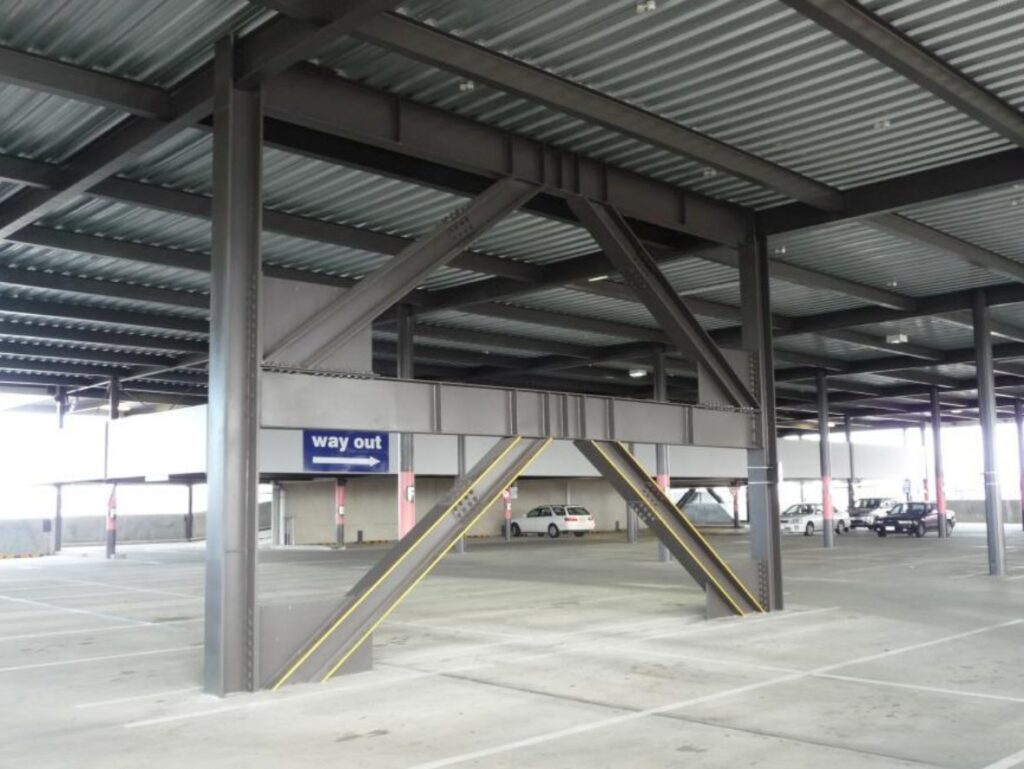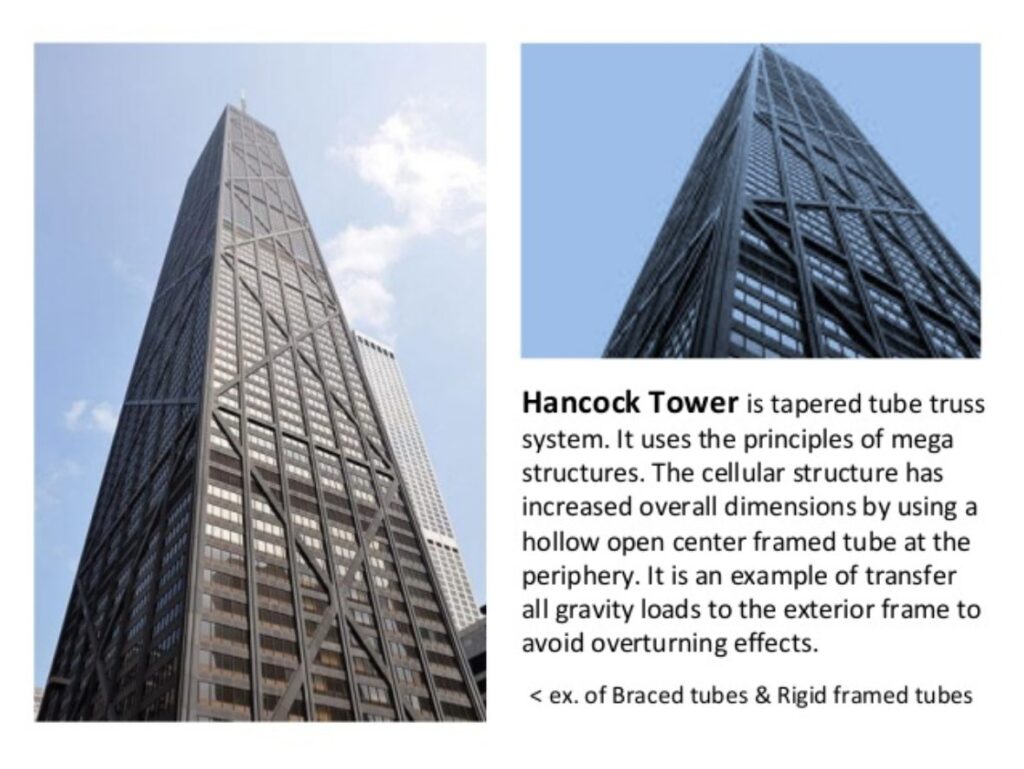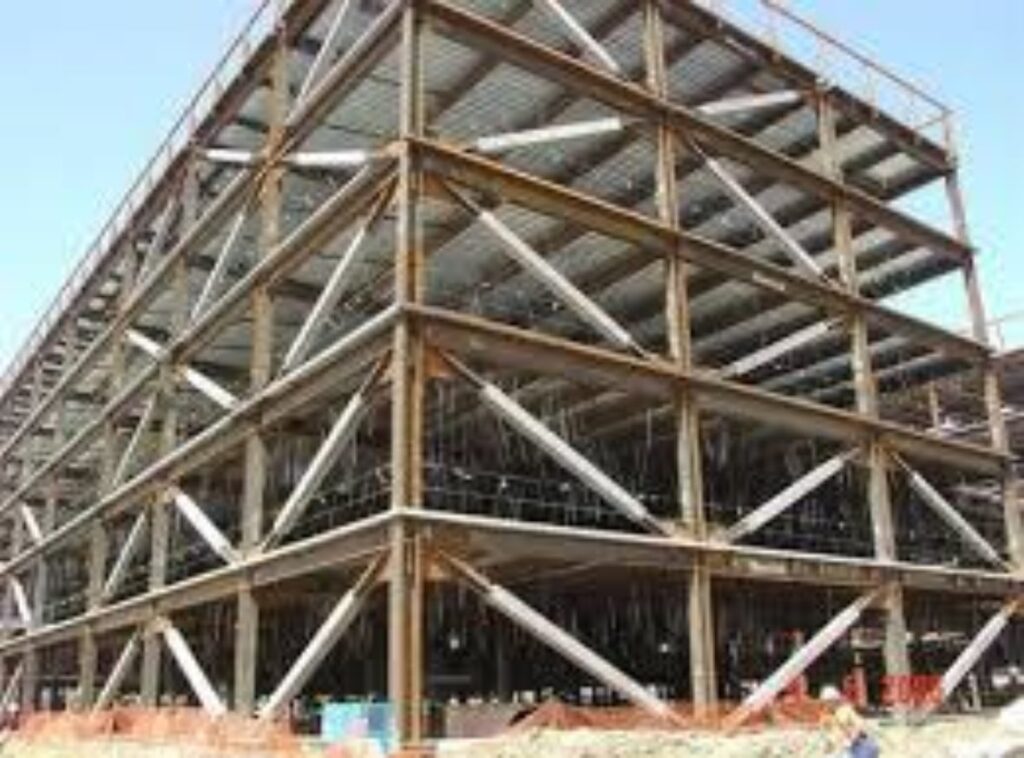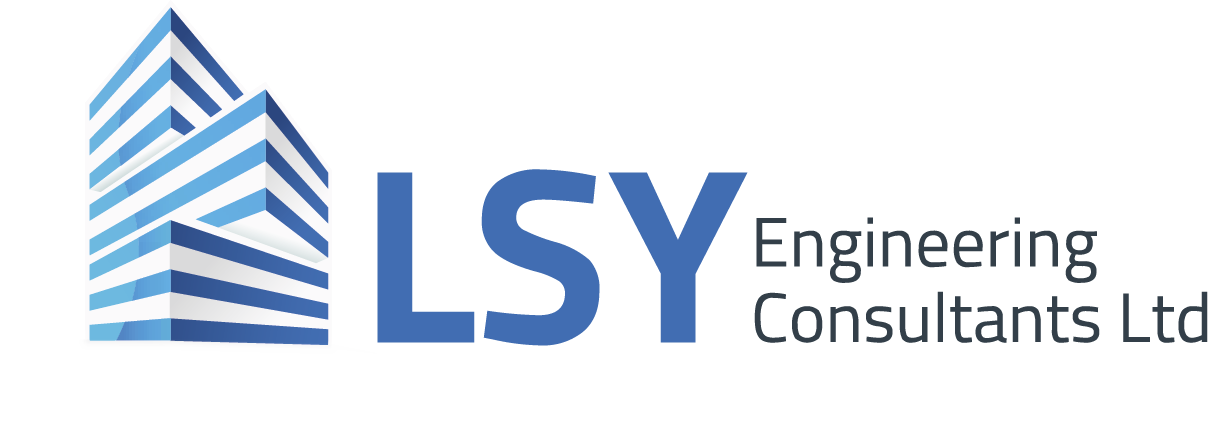Framed Bracing as a Stability System

Last month, we took a look at the use of walls as a stability system, highlighting when to use them and when not to. Today, we’re going to build on that by moving on to another type of stability system. It’s used on steel buildings all over the world. I’m talking, of course, about framed bracing.
Walls and framed bracing can both be used to provide stability and to allow building structures to be officially classified as being braced. Bracing can be used as a temporary or permanent means of stability and it can be seen on buildings throughout the world in the form of vertical bracing. It can look very different depending upon where you are, but the basic principles remain the same.
Mega-bracing is just bracing at a larger scale, and you can see it in action on buildings throughout major cities across the globe. Here’s just one example.

In a framed brace system, wind can be resisted by either a “strut system” or “tied system”, and some buildings use a mixture of both. Tiers are normally used on low rise buildings and are specified in the form of angles, flats and rods. Struts are generally saved for high rise buildings because they provide some extra stiffness. They’re typically specified as hollow or UC sections.
Struts are also useful when doors or windows need to be accommodated, even in low rise buildings. But either way, whichever system you go for, it’s always a good idea to make sure that the diagonal members are inclined at between 35 and 50 degrees. That helps with connection forces and connection details.

CONCLUSION
Hopefully this article has helped to provide some basic information on framed bracing and why we use it. Next time you go past a building with framed bracing, perhaps you’ll think of LSY. It might even be one of our projects! We’re working on a number of them at the moment and so stranger things have happened.
Here at LSY, we’re used to dealing with framed bracing In fact, we’re using the technique on a number of projects throughout the UK and Ireland, so if you’d like to discuss any project requirements of your own then please feel free to contact us. We’ll be more than happy to help!
Back to all news